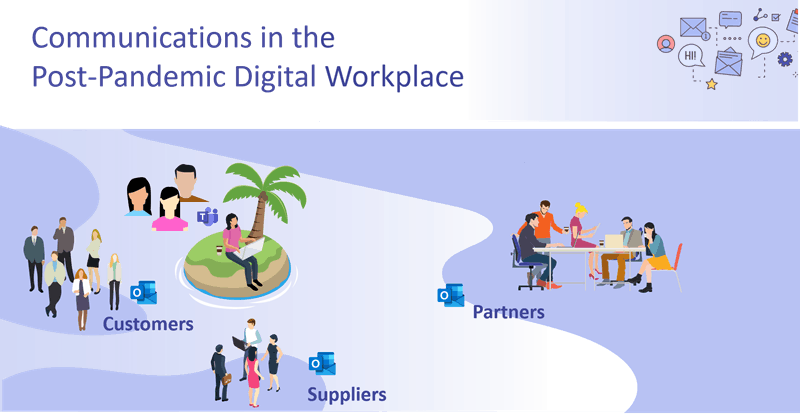As we clean off the kitchen table and get back to work from a much-needed holiday respite, it is time to re-assemble our ‘at home’ office and kick off 2021 with a resolution to make this year even more productive than last year. With the COVID vaccine rolling out at what is predicted to be a faster-than-anticipated pace, it won’t be long before we will regain (at least some) freedom for face to face interactions.
Make no mistake, we won’t be sweeping everything we learned during 2020 under the rug and going back to the ‘old normal.’ During 2020, in an effort to remain successful, workers and organizations learned to adapt. Some major changes that occurred in 2020 include the following:
- Many people upgraded their home Internet connection, under the FCC’s “Keep Americans Connected Pledge,” which was largely supported by Internet Service Providers (ISPs).
- People upgraded computing equipment and work environments, even renovated their homes to make working from home a more comfortable option. In fact, US home renovations were up almost 60% in 2020, at least partially to support ‘work from home’ arrangements.
- Organizations realized huge savings in a reduction of office space, utility costs, taxes, travel expenses and many other costs
- ‘At home’ workers realized enormous cost and time savings by eliminating commuting. One industry survey found that the average employee saved $4000 by working from home, while another estimates a daily savings of $758M in the US alone.
However, it is not all good. Despite the productivity gains from ‘at home’ work, there are still business activities that can’t be performed ‘from remote,’ including the following:
- Face to face interactions to build trust between business partners
- Networking at industry events to form important business connections
- ‘In room’ intimacy for creative and ideation sessions
- Team building – working shoulder to shoulder with colleagues in an office to build esprit de corp
Because these activities are critical to a business’ success, we will need to find a balance between ‘at home’ work and ‘face to face’ time. But with companies shuttering offices, the new normal will likely involve more work from regional, satellite offices. This arrangement will help optimize the savings realized from reduced commute times and reduced office space with the opportunity for face to face interactions.
New Challenges in the Post-Pandemic Digital Workplace
There’s no doubt that in this new Digital Workplace, people will continue to spend much of their time working independently and collaborating with colleagues remotely. Because communications with external parties like customers, suppliers, and partners will continue using email, telephone calls, and virtual meetings, workers will face two main challenges:
- Finding information – as communications spread across Outlook, SharePoint, OneDrive, and Teams, it becomes difficult to find information. For example, a critical document could be stored in a SharePoint location, a Teams channel (and which one?), or in OneDrive. Important emails shared between colleagues and external partners like customers, suppliers, or partners are impossible to find unless they are stored in a centralized location, like SharePoint.
- Getting help from colleagues – sending a chat message to a colleague is easy, but getting help with a current business problem, like answering a customer’s inquiry is more complicated. The reason is severalfold. First of all, your colleague probably needs to reference background documents and emails to weigh in. And finding those takes time. Which leads to the second problem: context. Answering a request for help necessitates leaving what we were doing and focusing on the new task. This task switching demands cognitive energy that saps productivity.

The Secret to Productivity in the Post-Pandemic Digital Workplace
The good news is that you already have what you need to deal with these two challenges; it is called Microsoft 365. Microsoft 365 includes many apps that address the problem of finding information and getting help from colleagues. If only there was a way to get them to work together? For example, when you communicate with a customer using Outlook email and then want to discuss the customer’s questions with your colleagues, you need to switch over to Teams and re-orient yourself. The result is disconnected conversations that become difficult to follow.
How do you get Outlook and Teams to work together seamlessly, so you can find information when you need it AND reach out to colleagues in context, so you can remain productive? To view the answer for yourself, I invite you to view this week’s webinar entitled “The Role of Email in the Post-Pandemic Digital Workplace” that demonstrates a new streamlined user-experience for Microsoft 365 that enables ‘at home’ and ‘in office’ workers to be productive with Outlook, Teams, and SharePoint, by focusing on the business task at hand rather than toggling between tools looking for information and for help from colleagues.

